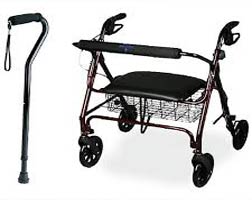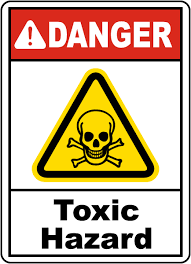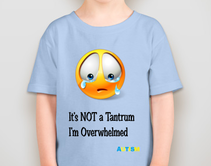What causes autism? Much has been said and hypothesized. In my last post on autism, I talked about my dementia symptoms on top of my autism spectrum disorder. So I have been on a quest to get help … to see if causes for my disabilities could be identified so that maybe there was some treatment that would help me get better and make my quality of life better.
AUTISM CAUSES AND TREATMENT INVESTIGATION
So I investigated the conventional medical community — the one that is trained to run tests and find a pill to help ones symptoms — that medical community. They have not been particularly helpful. To say the least. There is no magic pill. There is no particular medical specialty — though there is a sub-specialty– that is quite helpful. But more on that later. I had brain tests run — an MRI that was normal and activity tests (which tested the specific areas of the brain and how they functioned). Conclusion: Hard to separate possible dementia from autism spectrum disorder — particularly autism that was not noticed until I was 40 (so there are not childhood baseline behaviors to study). Big help. So I have been researching. I did not expect to find some magic cure for dementia and certainly not for autism. If it was easy, it would have been front page news by now. But maybe I could at least find some treatments that could help my autism behaviors and dementia deficits.
I mean, let’s face it, there’s no one thing … no one gene, no one food in ones diet, no vaccine etc. that causes autism … or dementia for that matter. This makes autism spectrum disorder as well as dementia hard to study. Why? Specifically because in a rigorous scientific study, ONE factor is studied and all other possible factors are controlled for. Otherwise, there is no way to determine if the one factor caused the effect being measured. So it’s much easier to study a pill and see if that pill works or doesn’t. This is why we have tons of failed rigorous scientific studies (including many sponsored by the pharmaceutical industry) that don’t point to a cure for autism or a cure for dementia such as Alzheimer’s–the most common form of dementia–as well as other diseases or disorders. BUT that does NOT mean there’s no treatments for autism or dementia that work…or no hope.
What has made the search for autism and dementia help even more perplexing is the autism causes or dementia causes (in my case both) say in Pittsburgh are different from the causes in Seattle or Fargo, North Dakota. Why? Because the environmental factors are different; and the mix of genetics is different–even when the environmental factors are similar (say in Pittsburgh vs. Gary, Indiana). What environmental factors? Here are just a few: Industrial chemicals in air and/or water; heavy metals such as arsenic, copper, lead etc. in city or well water; lead in household walls from decades ago that seeps through the more recent paint; eating certain types of fish that contain mercury; pesticides on food; food that is genetically modified so that a person’s body may not recognize it as food but as something “foreign” and creates an autoimmune or allergic reaction against it; food that does not contain the vitamins and minerals the body requires; and “food” that contains artificial additives and colors. Lots of factors that may be occurring simultaneously so in effect hard to study–based on how scientific studies are traditionally done.
Ok, but what if you don’t have a significant exposure to environmental factors such as artificial food or heavy metals or industrial chemicals? A person’s genetics may lead to impaired enzymes or other factors which are unable to excrete very tiny amounts of toxins present in ones body; whereas, someone with different genetics or even a lot of people with variable genetics can excrete these minuscule toxins easily. In these cases, additional enzymes or supplements to help counteract that impaired function may be needed.
Besides food and chemicals, how much sleep and the quality of that sleep a person gets also may affect what disorders and diseases one gets. The human body needs adequate rest to heal and for the immune system to work properly. If one only sleeps 4 hours a night or has a sleep disorder, the body will not heal well from the everyday assaults it encounters. Even vaccines don’t work well if one doesn’t get adequate sleep in the couple of weeks after the shot; consequently, the immune response is muted and the vaccine may not do much good.
Another huge cause of disease and disorders: Stress and lack of exercise. Repeated episodes of stress further prevent ones body from warding off disease and obtaining adequate healing. Energy drinks and Vitamin C pills are a band-aid. As for exercise, there are mountains of articles on the benefits so I will just note this: Researchers now say sitting too long is as bad for your health as smoking.
CAN CERTAIN TREATMENTS HELP?
So what’s the point of all this? Did I find help for my autism behaviors and dementia symptoms? YES … and it’s on-going…but I will sum it up and how you can find that help, too. But first, you may be asking, how credible am I. First, I have a graduate degree in Public Health so I have known about a lot of the above for decades but not how the effects could be reversed. Two, I worked in health care particularly hospitals for 30 years–but in the laboratory, not as a physician–so I am specifically a clinical laboratory scientist. Three, my daughter and I are on the autism spectrum and are pursuing the course of action I am recommending to you…and most importantly, we have seen improvements in our health.
So what have I found in my current quest for autism and dementia treatments that work? Remember above I said there was a doctor sub-specialty that is helpful? ( I need to note that Allergist physicians are helpful to an extent in treatment–if allergies are part of your health problems. My daughter comes up with new allergies every few MONTHS). The sub-specialty is called Functional Medicine. Some of the physicians are called Integrative Medicine specialists. Generally, these are primary care providers who specialize in functional or integrative medicine.
But, I must warn you that because of the difficulty in measuring treatment outcomes (as noted above), the “mainstream medical community” tends to dismiss these “alternative medicine” solutions (if you can call eating organic food, for example, alternative medicine…) because most of the studies out there are on drugs and whether they work or not. Because there are variations of causation between people, scientifically measuring outcomes is incredibly difficult. Doesn’t mean the treatments don’t work. But it’s not going to make a pharmaceutical company richer. (Full disclosure: I take exactly 4 pharmaceutical drugs which DO help me. One for a sporadic fast heart rate for unknown reason, one for my thyroid, one for my anxiety and one for sleep because I have a terrible lifelong sleep disorder. Not saying that pharmaceutical drugs don’t have their effective uses–just that they don’t fix everything and side effects may make your health even worse).
WHAT YOU NEED TO HAVE DONE
Here’s what you need the Functional Medicine physician to do–every physician has his/her preferences so they may not do ALL of these without you suggesting. In no particular order:
1. Get evaluated for a sleep disorder. I have a lifelong sleep disorder so any other intervention I make will have more limited effects than without a sleep disorder. My daughter went through full “sleep disorder testing” only to be told her condition is “severe” and it is “ideopathic” (no known cause) and no cure. But if you have sleep apnea, there is a very effective treatment, so the testing is not just a big waste of time.
2. Have your diet evaluated, ie. food choices and how you can improve it (such as eat organic, cut down on SUGAR and avoid artificial anything) as a change in diet can have a very significant impact on autistic behavior. Get tested for food allergies–as that will affect the diet recommendations. Just because you don’t break out in hives continuously, doesn’t mean you don’t have food allergies. There are a lot of foods that contain histamine so you may have to avoid those otherwise very healthy foods. Note: Antihistamines do NOT fix everything and they have to be tweaked, but they can be very helpful. Benadryl (diphenhydramine) is not an answer to every histamine problem, particularly if you are found to have a mast cell disorder.
What does your gut have to do with how your brain functions as in autism or dementia? A LOT. The gut is now being called the “second brain.” What bacteria are in your gut (which is influenced by what you eat and if you take antibiotics and if you are under stress) has a HUGE effect on how your brain works and what diseases or disorders you get. People on the autism spectrum have a very high likelihood of gastrointestinal problems
3. Get evaluated for vitamin and mineral deficiencies–particularly, but not exclusively, iron, zinc, magnesium, B vitamins, and Vitamin D. But it may not be so straightforward. For example, you may have a normal blood level of B12, but have an enzyme problem in processing the B12–which would need a specialized test to detect.
4. Get evaluated for heavy metal toxicity (particularly, lead, arsenic, and mercury). There are methods to remove the toxins but it has to be done carefully. Though most people can tolerate a tiny amount of heavy metal exposure, not everyone can. It depends on one’s genetics.
CONCLUSION
So how much difference can the above recommendations make? Functional medicine physicians have corrected violent, non-talkative autistic kids to kids with NO demonstrable autistic behaviors. No, it’s not wishful thinking (though the mainstream media will tell you it is). Likewise, people with even acute dementia have reversed their symptoms by following the above recommendations. Why haven’t you heard about this revolution? Big Business, Big Pharma and a medical school model that teaches physicians to prescribe a pill for what ails you.
There are many causes of autism and dementia and treatments will vary depending upon the individual. But there is a specialty of physician that has experience reversing behaviors and symptoms in autistic people and those with other neurological disorders such as dementia.







